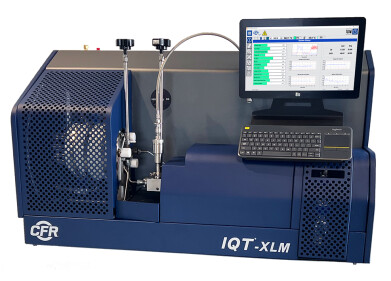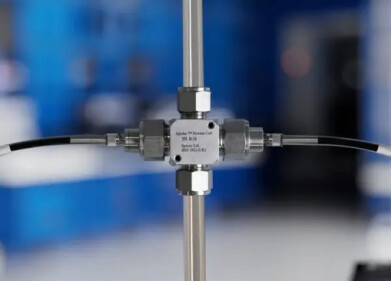Analytical Instrumentation
Safe GC solution for the sampling & analysis of liquefied gases
Oct 19 2016
The sampling and analysis of impurities and contaminants in liquefied gases is a challenge. To eliminate the need for evaporation of the liquefied gas and to overcome the discrimination and adsorption effects Da Vinci Laboratory Solutions has developed the Liquefied Gas Injector ASTM D7756. This gas chromatographic (GC) method features a safe injection of the liquefied gas directly onto the GC column and a representative sampling through a pressure station.
Proven Injection Technology
The direct injection approach of the Liquefied Gas Injector (LGI) includes the proven fuel direct injection technique used by the automotive industry to inject fuel into the automotive engine combustion chamber.
The LGI is connected to a standard GC injector needle, which is inserted into a GC large volume on-column injection system. Solenoid activation transfers the pressurised sample through the needle directly on-column. A sliding device moves the needle downwards for the injection and upwards for purging.
Since its introduction in 2010 the LGI has been successfully used by a global installed base of leading oil refineries.
Representative Sampling
To allow a representative sample injection a Pressure Station is used to keep the sample in a liquid phase during the injection. The sample cylinder is installed using quick connectors. For liquid samples the Pressure Station adds high pressure Nitrogen to the sample cylinder and controls the outlet pressure and flow.
Optionally the Pressure Station can also be configured for gas samples by including a vaporizer to control the sample evaporation after injection. The waste sample is vented to a central waste system to ensure laboratory safety.
Wide Application Range
The DVLS Liquefied Gas Injector offers laboratories a proven GC standard for the following applications:
- Oily residues and light contaminants in LPG (ASTM D7756, EN 16423)
- Hydrocarbon composition of LPG (ASTM D 2163, ISO 7941)
- Sulfur compounds in liquefied petroleum gases
- Desulfurization additives in LPG: DIPA, MEA & DEA
- Inhibitors, additives and Dimers in Butadiene: ACN, ρTBC, Butadiene Dimer
- Nitrogen, carbon dioxide, hydrogen sulfide and hydrocarbons in unstabilised gas condensate.
Accurate and Fast Performance
Several case studies demonstrate an excellent and fast performance of the LGI. The case studies are described in the various application notes. One of the application notes describes the use of the LGI-GC technique for the analysis of sulfur compounds in liquefied Propane and Butane samples and in a liquid Pentane sample.
Using a FPD detector the limits of quantification (LOQs) range from 0.18 to 0.27 mg sulfur/kg and the limits of detection (LODs) from 0.05 to 0.08 mg sulfur/kg respectively. This demonstrates that the LGI-GC technique combined with a sulfur specific detector offers a powerful tool for sulfur control of liquefied petroleum gas samples and liquid pentane samples.
Digital Edition
PIN 25.5 Oct/Nov 2024
November 2024
Analytical Instrumentation - Picturing Viscosity – How Can a Viscometer or a Rheometer Benefit You? - Sustainable Grease Formulations: Evaluating Key Performance Parameters and Testing Method...
View all digital editions
Events
Dec 03 2024 Dusseldorf, Germany
Dec 08 2024 Anaheim, CA, USA
Turkey & Black Sea Oil and Gas
Dec 11 2024 Istanbul, Turkey
Dec 19 2024 Aurangabad, India
Jan 20 2025 San Diego, CA, USA





















